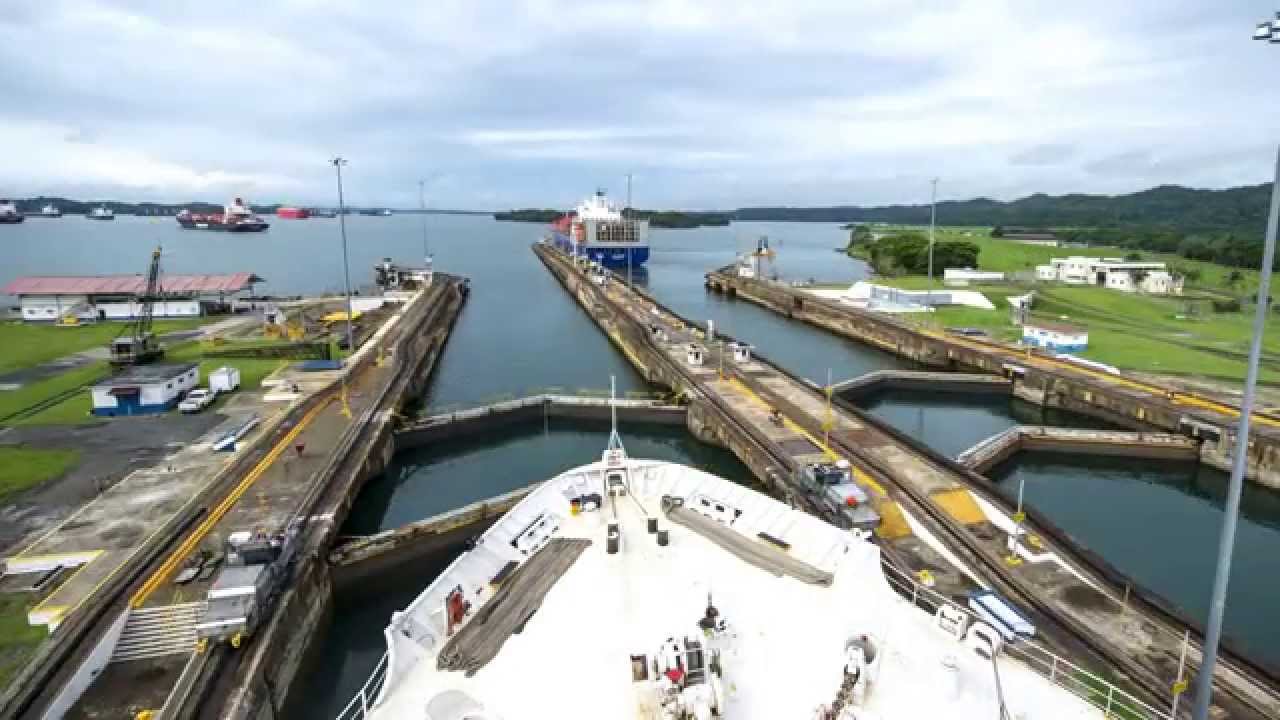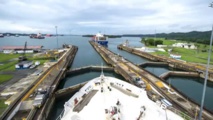During the nine years of construction work worth more than $ 5 billion, the Panama Canal got equipped with a third set of canal locks and deeper navigation canals. A number of additional improvements also make possible to double the isthmus’ throughput capacity for the goods transportation between the Atlantic and Pacific oceans.
By the end of June, the new gateways will be opened for the first ships. After that, the effect of optimization will be felt by both Asian gas terminals and ports in Miami, Long Beach and Santiago.
Launching the updated canal coincides with a sharp increase in natural gas production in the US, which, along with shale deposits, needs new markets. The deeper canals are adapted for massive tankers which transport the LNG. Markets from Chile to China will become more accessible for oil producers from North and South America, while millions of tons of cargo from Asia are bypassing the western US ports and prefer to moor along the Gulf Coast or the East Coast.
The projected growth provoked work worth billions of dollars. Among the projects are construction of additional terminals in the US ports, about the Caribbean islands and near the coast of South America, for getting the lion's share of traffic is beneficial to everyone. Panama Canal also relies on to become a distribution center for international manufacturers. Now, it is planning to expand the space for more than 5 million of additional cargo.
"The canal’s main future advantage is that it load off the world fleet," - said Moses Kopmar, analyst at Moody's Investors Service.
However, the forthcoming enlargement will not completely solve all problems of the canal. Despite the fact that the number of hosted cargo ships will be tripled, the Panama Canal will not be able to receive largest ships and tankers with crude oil. Moreover, the movement in the canal will depend on the global economy rather than on the canal’s size itself.
Experts believe that the expansion proved critical for the country, given that this route begun to lose its relevance. The canal helped to transport about 340 million tons of cargo in the fiscal year that ended in September last year, which accounted for about 6% of total world trade.
For companies involved in the gas and oil transportation, which have only recently recovered from the price collapse, reduced downtime and cost of delivery will provide much-needed revenue boost. Manufacturers of corn, soybeans and wheat in the United States will also benefit, along with importers such as Dole Food Co. Inc. and Chiquita Brands International Inc.
On the other hand, impact of this event on the oil markets is likely to be quite modest. The canal will be open for passage of large tankers, yet Post-Panamax, Very Large Crude Carriers, carrying most of the world's oil, will still not be able to use the canal’s capacities. Nevertheless, it is expected that modernization will open new routes for oil from Mexico, Venezuela and Colombia. In December, the US government lifted a 40-year ban on oil exports. So far, only one freight has crossed the canal: 380 thousand barrels of WTI oil, traded to Nicaraguan refinery in April.
The advanced canal can affect operation of ships carrying goods - from clothing to chemicals in the United States, the world's largest importer. Due to the fact that the latest generation of ships is too large for the canal locks, most of this traffic is now discharged in Los Angeles, Seattle and other cities.
source: washpost.bloomberg.com
By the end of June, the new gateways will be opened for the first ships. After that, the effect of optimization will be felt by both Asian gas terminals and ports in Miami, Long Beach and Santiago.
Launching the updated canal coincides with a sharp increase in natural gas production in the US, which, along with shale deposits, needs new markets. The deeper canals are adapted for massive tankers which transport the LNG. Markets from Chile to China will become more accessible for oil producers from North and South America, while millions of tons of cargo from Asia are bypassing the western US ports and prefer to moor along the Gulf Coast or the East Coast.
The projected growth provoked work worth billions of dollars. Among the projects are construction of additional terminals in the US ports, about the Caribbean islands and near the coast of South America, for getting the lion's share of traffic is beneficial to everyone. Panama Canal also relies on to become a distribution center for international manufacturers. Now, it is planning to expand the space for more than 5 million of additional cargo.
"The canal’s main future advantage is that it load off the world fleet," - said Moses Kopmar, analyst at Moody's Investors Service.
However, the forthcoming enlargement will not completely solve all problems of the canal. Despite the fact that the number of hosted cargo ships will be tripled, the Panama Canal will not be able to receive largest ships and tankers with crude oil. Moreover, the movement in the canal will depend on the global economy rather than on the canal’s size itself.
Experts believe that the expansion proved critical for the country, given that this route begun to lose its relevance. The canal helped to transport about 340 million tons of cargo in the fiscal year that ended in September last year, which accounted for about 6% of total world trade.
For companies involved in the gas and oil transportation, which have only recently recovered from the price collapse, reduced downtime and cost of delivery will provide much-needed revenue boost. Manufacturers of corn, soybeans and wheat in the United States will also benefit, along with importers such as Dole Food Co. Inc. and Chiquita Brands International Inc.
On the other hand, impact of this event on the oil markets is likely to be quite modest. The canal will be open for passage of large tankers, yet Post-Panamax, Very Large Crude Carriers, carrying most of the world's oil, will still not be able to use the canal’s capacities. Nevertheless, it is expected that modernization will open new routes for oil from Mexico, Venezuela and Colombia. In December, the US government lifted a 40-year ban on oil exports. So far, only one freight has crossed the canal: 380 thousand barrels of WTI oil, traded to Nicaraguan refinery in April.
The advanced canal can affect operation of ships carrying goods - from clothing to chemicals in the United States, the world's largest importer. Due to the fact that the latest generation of ships is too large for the canal locks, most of this traffic is now discharged in Los Angeles, Seattle and other cities.
source: washpost.bloomberg.com



















